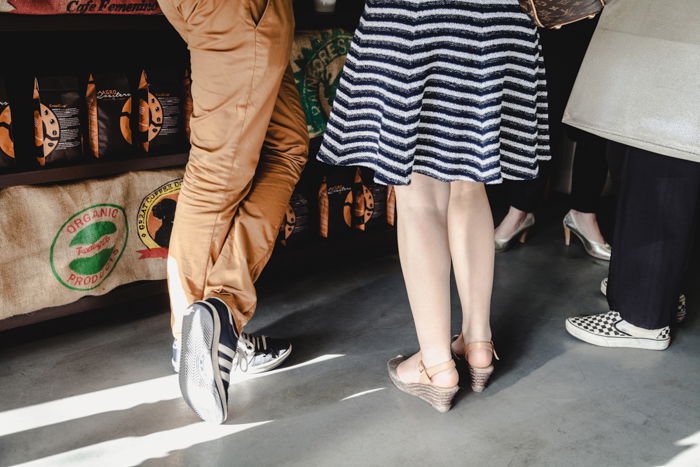In this article, we will explore the best ways to make money with photography. We will also discuss how to get started and what you need to do in order to be successful. So whether you’re a beginner or an experienced photographer, read on for some helpful tips that can put more money in your pocket. [ExpertPhotography is supported by readers. Product links on ExpertPhotography are referral links. If you use one of these and buy something, we make a little bit of money. Need more info? See how it all works here.]
Make Money With Photography: Stock
This is when a photographer licenses their images through a stock agency and receives a percentage of the sale price. Stock images appear on websites, in magazines and books, and a variety of other media. This is a cheaper and faster way for a buyer to get images to promote their business or their product. About ten years ago, photographers could make a very good living through stock photography. Many photographers did nothing but shoot stock, preferring to work at home on their own schedules than to deal with the demands of working directly with clients. This has become increasingly difficult in recent years as digital photography has made it easier for the average person to enter the photographic industry. That being said, if you’re a photographer or a blogger looking for a way to diversify your income stream, or do something with those images languishing on your hard drive, stock photography can still be a good option. It just requires a well-thought out approach. Microstock is what people think of when they think of stock photography. The focus is on high volume sales at a low price point per image. To make any money at all in microstock, you must be licensing thousands of images, preferably through several agencies. Your commission on each licensed photograph will be a few dollars or cents. If you’re starting out in photography, this can be a good way to go if you’re not focused on making an income from it. You can practice and improve your skills while building up a large image bank that can pay off financially for you later. However, if you have some experience you may want to try “premium” stock. This is a new category of stock photography that has emerged in the last several years. These agencies focus on representing work from a select group of photographers at a much higher price point. Often, the pricing structure is very simple: one price for a low resolution file, a higher price for a high resolution file. With premium stock, you will likely sell fewer photographs, but make more cash for each of those images. You can start making money with a comparatively low number of images. Premium stock agencies have higher standards than microstock agencies. Not every photographer is accepted and some even have a limit as to how many photographers they take on. They also have more rigorous standards in terms of the images they will accept for licensing through their sites, and routinely reject images that are submitted. Stock agencies do not always tell you why they do not accept an image. It may be for technical or image quality reasons, or it may be for commercial reasons, such as they have too many images of that particular subject. In terms of food photography, the simpler your subject, the better. A picture of a bowl of strawberries or an apple pie will sell more often than an image of a “recipe” such as lasagne.
How to Approach Taking Stock Photos
If you want to get involved in stock photography, there are a couple of ways to approach it. Either you approach it like a business and submit images consistently and often, or you use it as a repository for your old images. The path you choose will determine how much money you can make. Keep in mind that whether it’s microstock or premium stock, it’s very much a numbers game. This means you may need upwards of 1,000 or 2,000 images to make an appreciable income from licensing your images. This is good news if you’ve been shooting for years, already have a big inventory, and are confident about the quality of your work. If you decide to treat stock photography as a business, you’ll need to carve out significant time into your workweek to produce images for your portfolio. You will also need to invest in purchasing and making food and in buying props. This is a big picture endeavour that will take some time to take pay off. Another recommendation is to work with more than one stock agency. You will not be able to submit the same images to all of them as most stock agencies want image exclusivity. But diversifying your stock portfolio can help you make a greater income in the long run. Also, if you are with more than one agency, you can submit any images rejected by one agency to another. Often what is declined by one agency is picked up by another, and the reasons for that are difficult to guess. It’s also important to regularly and consistently submit to your agencies or sales might decline. In recent years, many established food photographers have pulled their images from stock or stopped submitting because the sales are not what they used to be. However, there are also many photographers that are making decent money from stock photography. If you are established and working with regular clients, you may be making better money from photography with them and don’t find the key wording and file management involved in stock photography to be worth your time. But if you are newer to the business, it can be a great way to begin to make money from photography and even market yourself to a wider audience.
Two Types of Stock Images
There are two types of license buyers could purchase through stock photography. Rights Managed images are licensed for a specific purpose and time duration. The photographer cannot license the image to another buyer for that specific time frame because the buyer wants to be sure that it doesn’t appear in other places or is used by competitors. The other type of stock photography is royalty free. The pictures can be licensed to anyone at any time with no restrictions. The photographer can license the image to any buyer at any time and to many buyers simultaneously. It’s important to note that as the creator of an image, you legally own the copyright. You are the owner of that image unless you sell the copyright—something that is rarely advisable to do. You will miss out all the possible earning potential from that image, such as that coming through stock photography. However, just as an aside, I don’t recommend submitting work you have recently shot for clients. Although you are legally able to do so, it’s not usually considered an ethical business practice. A client might have just paid you hundreds if not thousands of dollars to create for their brand and you’re selling them to anyone on the Internet for a few extra bucks.
Stock Agencies
OFFset A division of Shutterstock, OFFset functions as a boutique agency that has revolutionised the stock industry by offering premium images for premium pricing in a very simple format. A client can buy a high resolution for $500.00 US dollars. A low resolution file costs $250.00. The photographer gets a percentage, as laid out by the agency. For the price point at which these images sell, photographers can stand to make a decent income from licensing through OFFset. Although OFFset once was non-exclusive, as of 2018 newly accepted photographers must provide exclusivity. Adobe Premium Besides offering regular stock photography, Adobe recently launched a Premium division, also with a straightforward pricing model and competitive payouts. StockFood The oldest and biggest agency specialized in food stock. They deal in royalty free and rights managed images. And they categorize images accordingly once submitted. I love that StockFood tells you which images were rejected and why. Generally stock agencies do not tell you where your images did not meet requirements. This can be frustrating when you’re wanting to resubmit elsewhere, or simply improve on your work. StockFood also requires exclusivity. Stocksy Started by a photographer, Stocksy was another game changer when it burst on the scene in 2012. This Victoria, Canada based agency functions as a cooperative, sharing annual profits with the photographers on their roster. Stocksy has an annual call-to-artists, which is open for a limited time. Because it functions as a cooperative, they only take a certain number of photographers whose work lines up with their aesthetic. The following agencies are also ones you may consider sending your images to:
Getty Images Alamy Shutterstock iStockphoto Photodune
Most agencies require photographers to apply through their website with a link to their work, preferably their website. After that, they may ask you to provide a few sample high-resolution images for inspection before they accept or decline your application. Check our post on where to sell images online for more information.
Selling Through Your Own Website
Another option for selling your photos is through your own website. Sites such as PhotoShelter are a great tool for this. PhotoShelter is similar to other DIY websites such as Squarespace and Wix. It’s a photography-oriented platform that allows you to sell your images directly to buyers. It includes social media integration, cloud storage for your photos, as well as great SEO. The benefits of selling your images through your own site is that you have full control over how your photos are displayed. And you won’t have the work of other photographers displayed alongside your own. You also can earn much more because there is no middleman such as a stock agency. The Smugmug “Pro” package is an alternative to PhotoShelter. The platform enables you to showcase your work on a customizable storefront, and to manage your orders while retaining 85% of your revenue. You’re also able to offer prints, books, and greetings cards created from your images. There are several additional features such as built-in analytics and the ability to upload unlimited photographs.
Selling Photo Prints and Products
Another way to make money from photography is prints. You can sell kitchen prints or canvases of your favourite images. You can sell them yourself through Etsy, or certain websites that print your work on paper or canvas and ship them to customers at a price determined by you. These are print-on-demand stores. Photographers can sell their work printed on a variety of common items such as phone case, pillows, and tote bags. These stores allow you to sell products with your images without having to worry about maintaining an inventory, handling orders or shipping the products. If you decide to sell on Etsy, you will have the responsibility of managing the sale and shipping the print to the customer. On the other hand, you can set the price to be whatever you wish. And you have complete control of the quality of the product and the printing by choosing the printer you will work with. If you have a registered business, you can sign up with a wholesale printing company that can provide you with lower prices than other labs. Also, look into drop shipping. This is where the print lab will ship directly to the client. It saves you the time and energy of having to pick up the prints and ship them out yourself. Some of the most popular sites are:
Fine Art America Great Big Canvas Cafe Press Imagekind Redbubble Zazzle
The quality of printing on some of these sites is high. Many have been around for a long time and have great reviews from buyers and artists alike. One thing to know about these sites, however, is that to make the most of them, you will need to do your own marketing. There are thousands of prints available for purchase on every one of these sites. You may be lucky and have a lot of buyers that will stumble upon your work while searching for food-related prints. For the most part you will have to direct people there. This means using social media and your website or blog to direct them to you online stores. In sales, it takes marketing to bring awareness to the products you’re offering. How can people find you if they don’t know where to look?
In Conclusion
Whichever avenue you take to license your food photography images, you will have to optimize them for print. And you’ll have to meet the specific requirements set out by each organization. The quality required for print work is greater than that required for web, and your images must be exported with certain settings to be printed properly. It can take some time and effort. With the right strategy and a bit of research, you can figure out how to make money with photography and start selling your food pictures. For more great tips on improving your food photography, you can check out our tips on where to focus for better food shots or lightroom editing tips here. We have a great review on selling images on foap to check out too!









